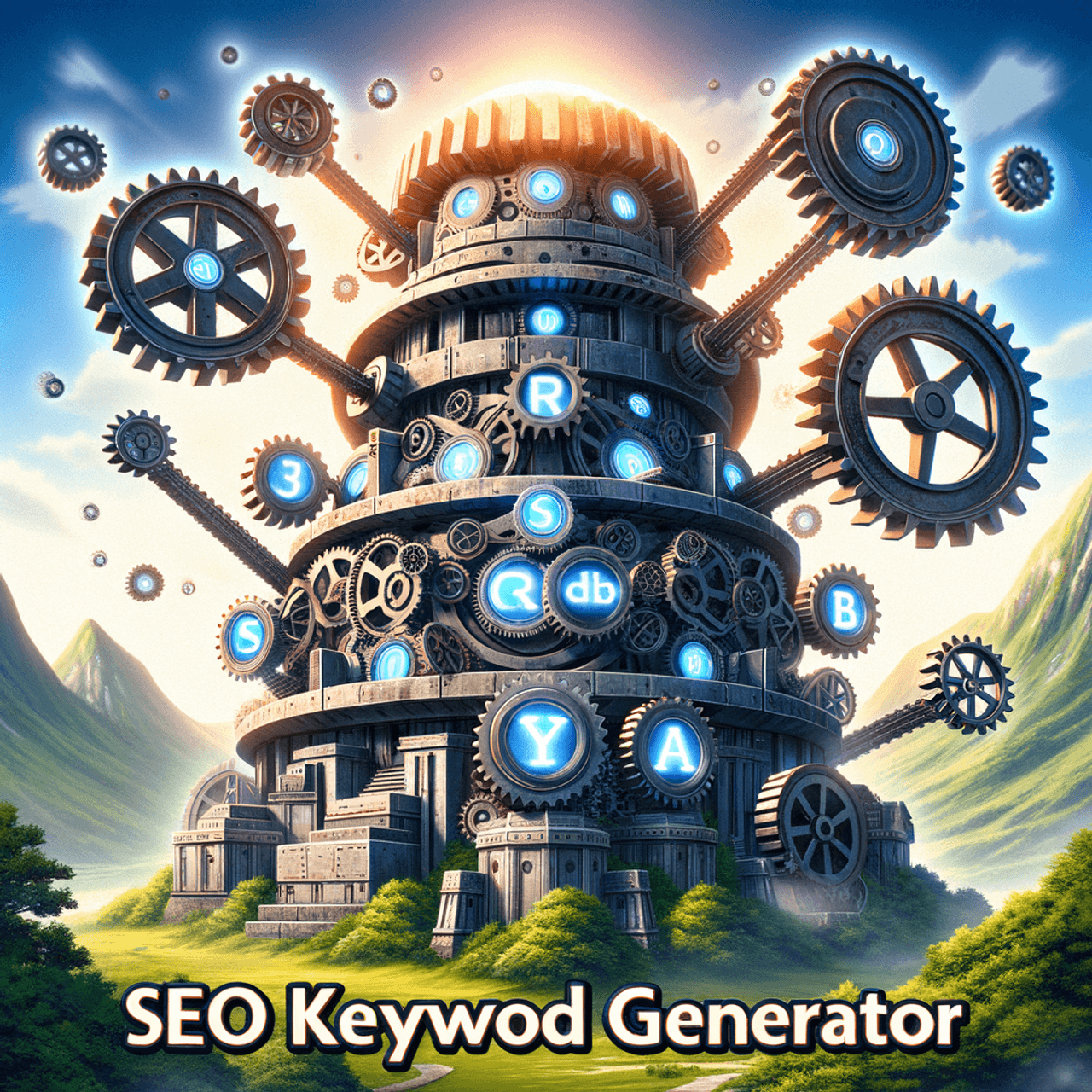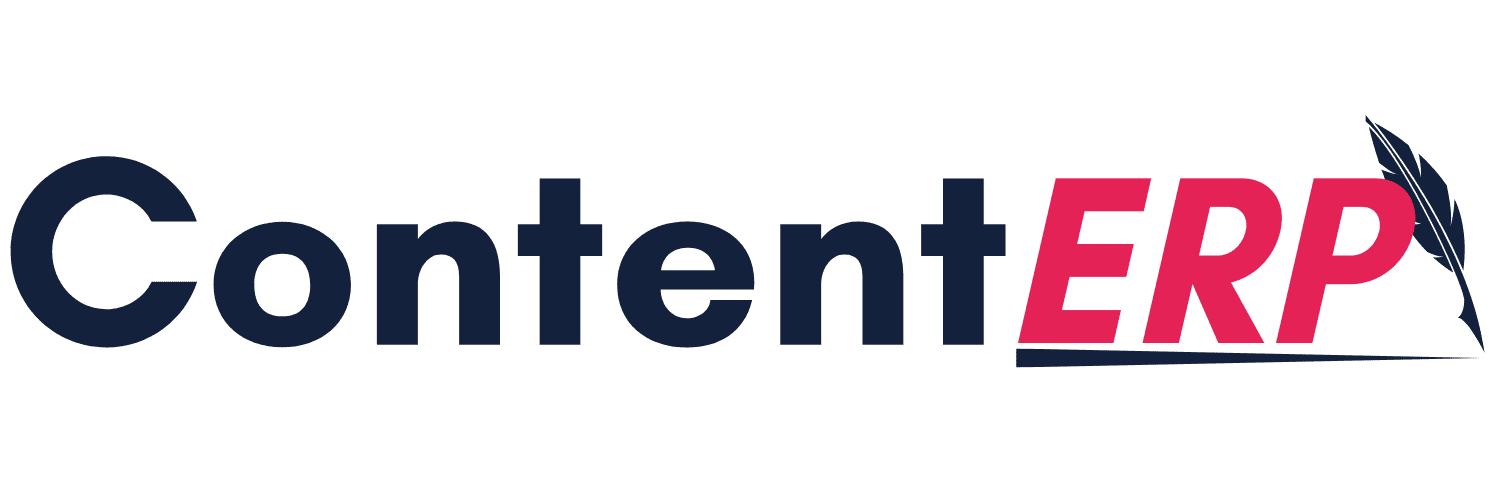by ContentERP | Oct 13, 2024 | Uncategorized
How ContentERP Can Streamline Your Publishing Process
In the fast-paced world of digital publishing, an old saying resonates deeply: “A stitch in time saves nine.” It’s a reminder that small actions taken now can prevent larger problems down the line. This timeless proverb perfectly applies to the intricacies of the modern publishing world. From content creation to final publication, a poorly organized process can lead to missed deadlines, errors, and frustration—issues that could have been avoided with the right tools and systems in place.

ContentERP is a revolutionary digital publishing solution that promises to streamline your entire publishing process. Whether you’re a solo digital publisher or part of a larger organization, this platform acts as a well-oiled machine, ensuring that every cog in the content creation and distribution process works in perfect harmony.
But what does it mean to streamline a publishing process truly? It means reducing the time it takes to move from ideation to publication, cutting out unnecessary steps, automating repetitive tasks, and creating a smooth, efficient workflow. Let’s explore how ContentERP can do just that, helping you go from concept to completion in record time.
The Need for Streamlined Publishing
In the age of digital media, publishing is no longer confined to newspapers and magazines. Every business, influencer, and organization is now a digital publisher, creating articles, blog posts, videos, and social media content at an unprecedented rate. Yet, with the explosion of digital content comes the challenge of managing the entire lifecycle of that content—from planning and creation to distribution and analytics.
Many publishers, both big and small, face the same hurdles: managing a growing backlog of content ideas, ensuring consistent quality, hitting deadlines, and distributing content across various platforms. These challenges can quickly snowball into chaos, especially when using disjointed tools or systems that don’t talk to each other. Like a car with missing parts, a publishing workflow with inefficiencies is bound to sputter and stall.
ContentERP is the digital answer to these age-old publishing problems. Much like the conductor of an orchestra, it keeps every instrument of the publishing process playing in unison. Through its integrated features, ContentERP simplifies content management, enhances collaboration, and eliminates the bottlenecks that slow down productivity.
Automating the Repetitive: Let the Robots Take Over
In any publishing process, there are tasks that are essential but monotonous: scheduling posts, optimizing headlines, tagging keywords, and distributing content across multiple platforms. These tasks, while necessary, can eat up valuable time and mental energy. But what if you could automate these repetitive steps?
ContentERP excels at this. Its automation features allow you to schedule your content well in advance, ensuring that posts go live at optimal times without you needing to lift a finger. Whether it’s publishing a blog post at midnight to catch an international audience or distributing content across several social media channels, ContentERP does the heavy lifting. It’s like having an invisible assistant who works 24/7, freeing you up to focus on higher-value activities like strategy and creativity.
And the automation doesn’t stop at scheduling. With built-in SEO tools, ContentERP can automatically generate keyword suggestions, optimize your content for search engines, and ensure that it meets the latest SEO best practices. Gone are the days of manually plugging in keywords or worrying if your meta descriptions are up to snuff—ContentERP takes care of it all, giving you peace of mind that your content is as discoverable as possible.
Collaboration Made Simple: Breaking Down Silos
Effective publishing isn’t just about producing great content; it’s also about ensuring that teams work together seamlessly. In many organizations, the publishing process is divided among different departments—writers, editors, designers, and marketers—each with their own role to play. But too often, these teams operate in silos, leading to miscommunication, delays, and errors. Like gears that don’t quite mesh, these disconnected processes can bring the entire operation to a grinding halt.
ContentERP brings everyone onto the same page—literally. Through its centralized platform, all team members can collaborate in real time, leaving comments, making edits, and tracking progress. Think of it as a digital newsroom where everyone—from the lead writer to the social media manager—can see what’s happening at every stage of the content lifecycle. This level of transparency not only improves communication but also eliminates the confusion and back-and-forth emails that slow things down.
With features like role-based permissions, ContentERP ensures that the right people have access to the right tools. Editors can review and approve content, designers can upload media assets, and marketers can schedule posts, all within the same platform. The result is a streamlined, collaborative environment where every piece of the publishing puzzle fits perfectly together.
A Bird’s-Eye View: The Power of Analytics
In the digital world, publishing content is only half the battle. Understanding how that content performs is equally important. Are readers engaging with your articles? Is your blog post driving traffic to your website? Are your social media posts gaining traction? These are the questions every digital publisher must answer to refine their strategy and make data-driven decisions.
With ContentERP’s robust analytics dashboard, you get a bird’s-eye view of your content’s performance across all platforms. Whether you’re tracking page views, social media engagement, or SEO rankings, ContentERP provides real-time insights that help you understand what’s working and what’s not. It’s like having a GPS for your publishing process, showing you exactly where to steer your efforts for maximum impact.
But ContentERP doesn’t just report numbers; it interprets them. Using advanced algorithms, the platform can identify trends, suggest improvements, and even predict future content performance based on past data. This level of insight allows you to fine-tune your content strategy, ensuring that every post is optimized for success.
Managing the Content Lifecycle: From Idea to Publication

The process of creating and publishing content can feel like a long journey, with many stops along the way. From brainstorming and drafting to editing, reviewing, and finally publishing, there are numerous steps that need to be managed carefully. It’s easy for things to slip through the cracks—an important article gets lost in the shuffle, a deadline is missed, or content goes live without final approval.
ContentERP serves as the ultimate project manager for your content, helping you track every step of the publishing process. With customizable workflows, you can create a clear path for each piece of content, ensuring that nothing falls off the radar. Whether you’re working on a tight deadline or planning a long-term content campaign, ContentERP keeps everything organized and on schedule.
The platform also integrates with other digital tools and systems, allowing you to pull in content ideas from various sources, manage media assets, and even handle customer feedback—all in one place.
The Flexibility of a Cloud-Based Solution
One of the most significant advantages of ContentERP is its cloud-based nature. This means that no matter where you are, you can access the platform and manage your content. Whether you’re working from a home office, a coffee shop, or halfway across the world, you have full control over your publishing process. This flexibility is a game-changer for digital publishers who need to stay connected and productive, even on the go.
Because ContentERP operates in the cloud, it also updates in real-time. There’s no need to worry about outdated software or losing your work. Every change, edit, or update is instantly saved and accessible to your team, providing a seamless experience that keeps your publishing process moving forward.
Streamlining Your Success
The publishing world is moving faster than ever, and the pressure to create and distribute content efficiently is intense. But as the proverb says, “Well begun is half done.” Streamlining your publishing process with ContentERP is the first step toward ensuring that your content not only gets created but also reaches its audience in the most effective way possible.
By automating repetitive tasks, fostering collaboration, leveraging analytics, and managing the entire content lifecycle, ContentERP acts as both the engine and the driver of your digital publishing machine. It doesn’t just make your job easier—it makes your entire organization more efficient, more creative, and more responsive to the demands of today’s digital landscape.
As the legendary management consultant Peter Drucker once said, “Efficiency is doing things right; effectiveness is doing the right things.” With ContentERP, you can do both. The only question is: Are you ready to take your publishing process to the next level?
by ContentERP | Oct 13, 2024 | Uncategorized
The Ultimate Guide to Promoting Blog Posts on Social Media

In 1963, on the steps of the Lincoln Memorial, Martin Luther King Jr. delivered his famous “I Have a Dream” speech. His words didn’t just move a crowd—they echoed through history. King understood something fundamental: It’s not enough to have a powerful message; that message must also be heard. Fast forward to today, and while the battleground for change has shifted to digital platforms, the need for amplification remains the same. It doesn’t matter how brilliant your blog post is if it’s sitting quietly in a corner of the internet, unnoticed and unread.
The good news? We live in an era where social media can serve as your megaphone. With millions of people scrolling through their feeds daily, the potential for blog post promotion is immense. But simply posting a link on Facebook or X won’t cut it—there’s an art and science to maximizing your reach. That’s where this guide comes in. Here’s how to strategically promote your blog posts on social media and turn your content into an engine for growth.
Step 1: Choose the Right Platforms for Your Audience
In a sea of social media platforms, knowing where to start can feel like a daunting task. Should you focus on Facebook, Instagram, X, or LinkedIn? The answer depends on your audience. Just as a fisherman chooses the right bait for the right fish, bloggers must pick the social media platforms that align with their target readers.
For instance, LinkedIn is ideal for business-oriented content, while Instagram thrives on visually engaging posts. X, with its real-time updates, works well for news, opinions, or time-sensitive information. As for Facebook, it’s a great all-rounder, but only if you know how to engage its algorithm effectively.
That said, diversifying your approach can help you maximize your reach. Tools like ContentERP can help you manage and distribute your content across multiple platforms, making the task much less overwhelming. With ContentERP’s content distribution platforms, you can schedule posts, track performance, and engage your audience in one seamless workflow.
Step 2: Craft Platform-Specific Content
Each social media platform is like a different stage in the world of digital theater, and your performance must change accordingly. A post that works on Facebook might fall flat on Twitter. To maximize engagement, craft platform-specific content that resonates with the audience of each network.
On Instagram, your blog promotion needs to be visually captivating. High-quality images, aesthetically pleasing layouts, or even a carousel with teasers from your post can draw users in. On Twitter, concise, punchy posts with attention-grabbing headlines and a relevant hashtag or two can do the trick. LinkedIn, by contrast, rewards more thoughtful, professional takes—think excerpts or key takeaways from your blog that would spark a conversation in business circles.
For every platform, the goal is the same: to intrigue and entice readers. Just as an actor shifts tone and manner depending on the audience, your posts must be tailored to each platform’s strengths.
Step 3: Timing Is Everything
Much like the punchline of a joke, timing is everything when it comes to social media. Posting at the right time can mean the difference between crickets and a flood of engagement. But what is the right time? This depends largely on your audience, but studies suggest that posting on Facebook in the afternoon and Twitter during the early hours often yields the best results.
However, no one can monitor their social media accounts 24/7, which is where platforms like ContentERP come into play. By allowing you to schedule your posts in advance, ContentERP ensures your blog gets promoted at peak engagement times, even when you’re offline.
Additionally, consider the frequency of your posts. Promoting a blog post once isn’t enough; repetition is key. But don’t just post the same thing over and over—that’s like playing the same song on repeat, and no one likes a broken record. Instead, mix things up with different headlines, quotes, or visuals to keep your promotions fresh and engaging.
Step 4: Leverage Influencers and Partnerships
Imagine walking into a crowded room. No one knows who you are—until someone with influence vouches for you. Suddenly, people are paying attention. This is the power of influencer marketing. Leveraging relationships with influencers can give your blog the credibility boost it needs to reach a wider audience.
You don’t need to chase celebrities with millions of followers; micro-influencers—those with smaller but highly engaged audiences—are often more effective. Reach out to influencers in your niche and see if they’ll share your blog post with their followers. In exchange, you can offer to collaborate, share their content, or provide exclusive insights.
Partnerships can also be formed with other bloggers or companies. Guest blogging or co-hosting a social media event allows you to tap into their audience while offering something valuable in return. Collaborations like this can elevate your blog from being a solitary voice to part of a dynamic conversation.
Step 5: Engage with Your Audience
Social media isn’t a monologue—it’s a conversation. Simply posting a link and walking away is like starting a conversation and then leaving the room. If you want to promote your blog posts effectively, you need to engage with your audience. Respond to comments, ask questions, and encourage discussions around your blog topics.
Personifying your brand and treating followers like friends rather than just numbers makes all the difference. This back-and-forth interaction can build loyalty and create an environment where your audience actively seeks out your blog content.
Moreover, platforms like ContentERP can help monitor these interactions, offering insights into how your audience is engaging with your posts, which allows you to tweak and refine your approach as needed.
Step 6: Track Your Success and Adjust

Imagine driving without a map or a GPS. You might get somewhere eventually, but you’ll waste time and fuel along the way. In the world of content promotion, analytics are your map. Without them, you’re flying blind.
ContentERP provides detailed performance tracking so you can see which platforms and posts are driving the most traffic. Are Instagram users flocking to your blog while Facebook engagement lags? Are certain keywords pulling in more clicks from YouTube trends? By analyzing this data, you can fine-tune your promotion strategy, doubling down on what works and adjusting what doesn’t.
Ready to Amplify Your Blog’s Voice?
Promoting blog posts on social media isn’t just about shouting into the void—it’s about crafting a message that cuts through the noise and finds its audience. By leveraging the right platforms, crafting tailored content, and staying engaged, you can transform your blog into a digital force to be reckoned with.
But remember, the world of social media is constantly evolving, just like the speeches that shape history. The question is: Are you ready to take the stage and let your blog be heard?
by ContentERP | Oct 13, 2024 | Uncategorized
The Best ContentERP Practices for Effective Keyword Research
In 1940, during one of Britain’s darkest hours, Winston Churchill stood before the House of Commons and delivered a speech that would resonate through history: “We shall fight on the beaches, we shall fight on the landing grounds…we shall never surrender.” This stirring call to action was more than a military strategy—it was a vow to stand firm and fight for survival. Churchill knew that battles were won not only through brute force but by knowing one’s enemy, understanding the terrain, and preparing accordingly.
Fast forward to the digital battlefield, and the stakes have changed, but the principles remain strikingly similar. In today’s world of digital marketing, the fight is for visibility. The battleground? Search engines. And much like Churchill’s wartime strategy, success in the digital landscape demands foresight, preparation, and the right tools. Effective keyword research, guided by platforms like ContentERP, is the secret weapon that can lead to victory, whether you’re trying to conquer Google News today or ride the wave of YouTube trends.
However, keyword research is more than a checklist item in content creation. It’s the compass that points your content toward its audience, ensuring your message doesn’t get lost in the vast expanse of the internet. So, how do you wield this tool to its fullest potential? Let’s explore the best practices for conducting keyword research using ContentERP, ensuring that your content not only ranks but thrives.

Understanding the Terrain: The Importance of Keyword Research
Imagine building a house without knowing where you’re going to put it. You could have the best materials, but without a foundation, it’s destined to crumble. Keyword research is the foundation in the world of SEO. Before crafting your blog posts, videos, or news articles, you must first identify the keywords that will attract your target audience.
When done right, keyword research is like having a map that shows you the hotspots where your content is most likely to succeed. Whether you’re aiming to rank high on Google News today or tap into YouTube trends, understanding which words and phrases people are searching for allows you to tailor your content, making it more likely to be discovered.
ContentERP provides you with powerful keyword research tools, but the key lies in using these tools strategically. It’s not just about stuffing your content with as many popular search terms as possible—that approach went out with the dinosaurs of SEO. Today, it’s about finding balance, using keywords that are both relevant to your content and aligned with your audience’s intent.

Best Practices for Effective Keyword Research with ContentERP
1. Start with a Solid Foundation: The Keyword Planner
The best keyword research starts with the right tool, and ContentERP’s keyword planner is built for the task. Much like a seasoned navigator, this tool helps you chart your course by identifying keywords that matter most for your niche.
The keyword planner works by analyzing search volumes, competition levels, and relevancy. For instance, if you’re writing about YouTube trends, the planner will show you related keywords, helping you pinpoint the most effective terms to include in your content. Instead of casting a wide net, focus on terms that not only have high search volumes but also align with your content’s theme.
Think of the keyword planner as your research assistant. It takes a mountain of data and distills it down into actionable insights, allowing you to create content that speaks to what people are searching for.
2. Tackle Long-Tail Keywords: The Hidden Gems
The digital world is a crowded place, and standing out in Google search results can be as challenging as finding a needle in a haystack. This is where long-tail keywords come in. Long-tail keywords are longer, more specific search phrases that may not have the same search volume as shorter terms but often attract more targeted and engaged traffic.
Using ContentERP’s keyword planner, you can uncover these hidden gems—keywords that are less competitive but highly relevant to your content. For example, rather than targeting a broad keyword like “Google News today,” focus on a long-tail variation such as “how to get featured in Google News today for tech startups.” This specificity increases your chances of ranking higher for that particular search query and ensures you attract the right audience.
3. Keep an Eye on Trends: Riding the Waves
Much like a surfer catching the perfect wave, successful content creators know how to ride trends. Keeping up with what’s trending on platforms like YouTube is crucial for producing timely and relevant content. ContentERP’s trend analysis feature allows you to stay ahead of the curve by tracking trending keywords and topics across various platforms.
By identifying the latest YouTube trends, for example, you can tailor your content to ride the wave of what’s currently popular. But beware—the window of opportunity for capitalizing on trends can be short. Timing is everything, so make sure your content is timely and relevant to avoid missing out.
4. Competitor Analysis: Know Your Rivals
As Churchill knew, understanding your enemy is half the battle. In the world of SEO, your competitors are those already ranking for the keywords you want. ContentERP’s competitor analysis tool allows you to see which keywords your rivals are targeting and how well they’re ranking.
This insight is invaluable. By analyzing your competitors’ keyword strategies, you can identify gaps in their approach and seize opportunities they might be missing. It’s like playing chess—you’re always thinking a few moves ahead. By crafting content that fills in these gaps, you can outmaneuver your competition and claim a higher ranking.
5. Monitor and Adjust: The SEO Feedback Loop
SEO isn’t static—it’s a living, breathing entity that requires constant attention. Once you’ve optimized your content with the right keywords, your job isn’t done. ContentERP provides ongoing performance tracking, allowing you to monitor how your content is ranking and which keywords are driving traffic.
If certain keywords aren’t performing as expected, don’t be afraid to adjust your strategy. Think of it as tending to a garden—you can’t plant seeds and walk away. You need to nurture them, water them, and sometimes even replant them in better soil. The key is to remain flexible and responsive to the data.
Mastering the Art of Keyword Research
Effective keyword research is more than just a task on a checklist—it’s an art form, a blend of strategy, creativity, and data-driven insights. With ContentERP, you have the tools to master this art, from the keyword planner that identifies the right search terms to competitor analysis that gives you a leg up on the competition.
But here’s the question: In the ever-evolving digital landscape, where trends change in the blink of an eye and competition is fierce, are you ready to let ContentERP guide you through the maze of SEO success? Your keywords are waiting. The only question is, will you find them?
by ContentERP | Oct 13, 2024 | Uncategorized
How ContentERP Can Help You Meet Your SEO Goals
In 1455, Johannes Gutenberg revolutionized the world with the invention of the printing press. What was once a painstaking, manual process of copying books by hand was suddenly automated, making information accessible to the masses. Fast forward to the digital age, and a similar revolution is underway, but this time, it’s all about content—and more importantly, how to get that content in front of the right audience. In today’s world, meeting your SEO goals is as crucial as Gutenberg’s invention was to the spread of knowledge.
Just like the printing press simplified and amplified the reach of written text, ContentERP, a state-of-the-art content management system, streamlines the process of search engine optimization (SEO), helping businesses navigate the complex web of digital marketing. With SEO becoming the modern version of “the right place at the right time,” ensuring your content is optimized for search engines can be the difference between being found and being forgotten.
But how exactly can ContentERP help you meet your SEO goals? Let’s dive into the ways this platform acts as the Gutenberg of the digital age, making SEO not only achievable but scalable.

The Challenge of SEO: A Never-Ending Battle
In the world of SEO, content is king, but only if that content can be found. And here’s where the battle begins—ranking on search engines is like trying to climb a mountain where the summit keeps getting higher. Search engine optimization in digital marketing is not just about sprinkling keywords across your content; it’s about aligning your strategy with algorithms that are as temperamental as the weather. One day you’re on the first page of Google; the next, you’re buried beneath pages of competitors.
This is where most content creators and businesses stumble. The effort it takes to research keywords, optimize metadata, structure content, and ensure internal linking can feel like navigating a maze blindfolded. But what if there were a guide, a tool that could lift some of the burden off your shoulders?
That’s where ContentERP shines—acting as your SEO compass, guiding you through the wilderness of ever-changing algorithms.
SEO Keyword Generator: Turning Research Into Results
One of the most critical components of SEO is keyword research. Imagine keyword research as a treasure hunt, where each keyword is a clue leading you closer to the buried treasure: higher search rankings. But not all clues are created equal, and finding the right SEO keywords can often feel like looking for a needle in a haystack.
Enter ContentERP’s SEO keyword generator. This tool doesn’t just throw random keywords at you; it uses data-driven insights to provide you with highly relevant keywords based on your industry, audience, and competition. By doing the heavy lifting, ContentERP saves you hours of manual research, allowing you to focus on creating content that resonates with your audience.
The SEO keyword generator can also suggest long-tail keywords—phrases that are often overlooked but can be a goldmine for driving niche traffic. It’s like fishing with a net rather than a spear: you capture a wider audience while still targeting those looking for something specific.
On-Page SEO Optimization: A Digital Makeover for Your Content

In SEO, the devil is in the details. You could write the most compelling, informative article, but if it’s not optimized properly, it might as well be invisible. Much like a great novel needs an editor to ensure clarity and flow, your content needs on-page SEO optimization to ensure it speaks the search engine’s language.
ContentERP offers a suite of tools that automates the on-page optimization process. Need to make sure your headings are structured properly? ContentERP’s analysis tool will ensure your H1, H2, and H3 tags are correctly formatted. Want to ensure you’re using keywords efficiently? The platform will provide real-time feedback on keyword density, helping you strike the perfect balance.
It’s like having an SEO coach by your side, offering tips and adjustments as you go. You don’t have to guess which elements need improvement—ContentERP tells you exactly where your content falls short and how to fix it.
Technical SEO: The Backbone of Search Rankings
While content is the face of SEO, the technical aspects are the bones holding everything together. Factors like site speed, mobile optimization, and proper indexing can make or break your ranking. No matter how brilliant your content is, if your website takes too long to load or isn’t mobile-friendly, search engines will penalize you.
ContentERP offers technical SEO features that address these back-end issues, ensuring your content is not only well-optimized but also easily accessible to search engine crawlers. Think of technical SEO as the foundation of a skyscraper—without it, the building may look good, but it won’t stand the test of time. ContentERP automatically ensures your content is built on a solid foundation.
Analytics and Performance Tracking: Your SEO Scoreboard
One of the biggest mistakes businesses make is creating content, optimizing it, and then hoping for the best. SEO is not a “set it and forget it” game—it requires constant monitoring, analysis, and adjustments. Fortunately, ContentERP comes with built-in analytics tools that give you real-time insights into how your content is performing.
These tools track key metrics like organic traffic, bounce rates, and search engine rankings, providing a clear picture of what’s working and what’s not. It’s like having a scoreboard during a game—you can’t know if you’re winning unless you track the score.
ContentERP doesn’t just stop at showing you the data; it also provides actionable recommendations. Did your content drop in rankings? The platform will analyze the cause and suggest adjustments, whether it’s updating your keyword strategy, refreshing your content, or improving your site speed.
A Seamless Workflow: Integration of SEO and Content Creation

Most content creators are familiar with the feeling of juggling too many tools at once. You’ve got one platform for writing, another for keyword research, another for analytics, and maybe a fourth for scheduling and distribution. It’s like trying to juggle flaming torches while walking on a tightrope—it’s only a matter of time before something slips.
ContentERP simplifies the entire process by bringing all these tools under one roof. From content creation to SEO optimization to performance tracking, it’s a one-stop shop. You no longer have to switch between platforms or worry about data falling through the cracks. With everything integrated into one seamless workflow, you can focus on what you do best: creating great content.
The Future of SEO with ContentERP
SEO isn’t just about chasing rankings—it’s about creating a strategy that will stand the test of time. ContentERP doesn’t just help you optimize your content for today’s algorithms; it helps you build a foundation for future success. By leveraging powerful tools like the SEO keyword generator and performance tracking, you’ll be equipped to navigate the ever-changing landscape of search engine optimization in digital marketing.
As you embark on this journey toward SEO success, ask yourself: Can your content afford to be invisible? Or will you take the leap and let ContentERP be the tool that helps you meet your SEO goals? The future of your content depends on the answer.
by ContentERP | Oct 13, 2024 | Uncategorized
Scaling Your Content Strategy with Automated Publishing
What if you could increase your content output without doubling your workload? This might sound too good to be true in the fast-paced digital world, where content reigns supreme. But here’s the reality: scaling your content strategy doesn’t have to be synonymous with burnout or endless hours spent creating, editing, and distributing content. The answer lies in automated publishing.
In the age of digital publishing, automation is no longer a luxury reserved for the tech elite. With the right tools—like a robust digital publishing platform—businesses of all sizes can streamline their content operations and grow their audience without breaking a sweat. Whether you’re a small team or a major enterprise, scaling your content strategy is no longer about working harder, but about working smarter.
But how exactly can automated publishing help you scale, and why is it such a game-changer for content creators and marketers alike? Let’s dive in.

The Challenge of Scaling Content in a Noisy Digital World
Let’s face it: the digital world is more crowded than a Manhattan subway at rush hour. Every day, billions of pieces of content are vying for the attention of readers across the globe. Standing out in this noisy environment requires not only quality but also consistency and volume. The more content you publish, the greater your chance of building authority, increasing visibility, and driving engagement.
However, creating content at scale is no small feat. It’s like running a marathon: after the initial excitement wears off, the sheer effort it takes to keep going can be overwhelming. You have to come up with fresh ideas, create polished drafts, collaborate with editors, meet deadlines, and ensure the content is distributed across the right channels. Multiply this process by several pieces of content a week, and you can see how scaling can quickly lead to burnout.
That’s where automated publishing comes in—a tool as vital to your content strategy as a map is to a lost traveler.
Automated Publishing: Your Secret Weapon for Scaling
Automated publishing is like having an extra set of hands—or ten—working alongside you. It’s the superhero of digital publishing software, designed to handle the time-consuming tasks that often bog down the content creation process. By automating parts of your workflow, you can shift your focus from mundane tasks to the creative, high-impact work that drives results.
At its core, automated publishing simplifies the repetitive and logistical steps in content production. It allows you to schedule posts in advance, distribute content across multiple channels simultaneously, and even automate social media promotion. Using one of the best digital publishing platforms like ContentERP, you can take full control of the entire content lifecycle, from creation to publication.
For example, imagine having the ability to plan out an entire month’s worth of blog posts, articles, and social media content, and with the click of a button, everything is set to publish at precisely the right time. Your content is deployed while you’re attending meetings, on vacation, or even asleep—talk about working smarter, not harder.
Streamlining Workflow with Automation
Creating content is like baking a cake: it requires the right ingredients, proper technique, and perfect timing. But what if you had a kitchen assistant who could measure the ingredients, preheat the oven, and set the timer while you focus on decorating the cake? That’s exactly what digital publishing software does for your content workflow.
Automation helps you break down the content process into bite-sized tasks, streamlining everything from ideation to final approval. A powerful digital publishing platform like ContentERP acts as a command center, allowing you to assign tasks, track progress, and set deadlines with ease. This not only eliminates bottlenecks but also ensures that your content machine runs like a well-oiled engine.
Additionally, automation reduces human error. Forget about missing deadlines or accidentally publishing the wrong draft—automated workflows ensure that every step is followed to the letter. From version control to automatic backups, digital publishing platforms are your safeguard against chaos.

Scaling Without Compromising Quality
When content creators hear the word “scaling,” many imagine sacrificing quality for quantity. But scaling your content strategy through automation doesn’t mean churning out cookie-cutter articles just for the sake of volume. Automated publishing can help you maintain—if not improve—content quality by giving your team the breathing room it needs to focus on creativity.
Instead of spending hours on manual scheduling, formatting, or distribution, your team can devote more time to research, crafting compelling stories, and refining your brand voice. ContentERP, for example, ensures that the quality review process isn’t rushed. With features like automated task assignments and built-in collaboration tools, your writers and editors can easily communicate and make revisions before hitting the “publish” button.
By automating routine tasks, you create space for innovation. And in the digital world, where standing out requires constant innovation, automation is your secret weapon.
The Future of Content is Automated
As the digital landscape continues to evolve, content creators and marketers face a critical choice: either keep up or get left behind. Automated publishing is the future of content creation, enabling you to scale your operations while staying ahead of the competition. The ability to produce and distribute more content, faster, without losing your creative edge is no longer a pipe dream—it’s a reality with the right digital publishing platform.
The question isn’t whether you can afford to automate your publishing workflow; it’s whether you can afford not to.
Transform Your Content Strategy Today
Picture this: it’s a cool autumn evening. You’re sipping your favorite cup of tea, feeling the warmth spread through your hands, as your latest content goes live automatically, reaching readers around the world. You didn’t have to rush, scramble, or sacrifice time with family. Instead, automation handled the heavy lifting while you enjoyed the fruits of your labor.
That’s the power of automated publishing—a digital assistant that never sleeps, never forgets, and always delivers on time. With ContentERP, one of the best digital publishing platforms on the market, you can turn this vision into reality.
Ready to take your content strategy to the next level? Sign up for ContentERP today and discover how automated publishing can transform the way you create, distribute, and scale your content.
by ContentERP | Oct 13, 2024 | Uncategorized
How to Automate Your Blog Writing and Publishing Process
 On my first trip to Spain, I found myself wandering through the streets of Seville, mesmerized by the blend of Moorish architecture and vibrant culture. I stumbled upon a small café tucked into an alleyway, where, to my surprise, a mechanical orange juice machine caught my eye. It wasn’t just any juice machine—this one was mesmerizing in its efficiency. The oranges rolled down from a basket, were sliced with precision, and the juice poured effortlessly into the glass, all without human intervention. I stood there, amazed, watching as the machine created fresh juice faster and cleaner than any person could.
On my first trip to Spain, I found myself wandering through the streets of Seville, mesmerized by the blend of Moorish architecture and vibrant culture. I stumbled upon a small café tucked into an alleyway, where, to my surprise, a mechanical orange juice machine caught my eye. It wasn’t just any juice machine—this one was mesmerizing in its efficiency. The oranges rolled down from a basket, were sliced with precision, and the juice poured effortlessly into the glass, all without human intervention. I stood there, amazed, watching as the machine created fresh juice faster and cleaner than any person could.
That little machine in Spain made me think: What if we could automate more in life, especially in areas where precision and speed are essential, like blog writing? In today’s digital world, where time is of the essence and content is king, many businesses are searching for ways to streamline their content production. What if we could, like that orange juice machine, automate our blog writing and publishing process to deliver high-quality content without the hassle?
With tools like ContentERP and modern AI writing assistants, automation isn’t a distant dream; it’s a reality that can save you time, reduce errors, and let you focus on the bigger picture of your content strategy. Here’s how you can automate your blog writing and publishing process without sacrificing quality.
Streamlining the Writing Process with AI
In the digital age, the pressure to consistently produce high-quality content can be overwhelming. For many blog writers, the challenge lies in turning ideas into engaging articles on a regular schedule. That’s where AI writing assistants come into play. These tools can help you generate drafts, create outlines, and even suggest SEO-friendly headlines and keywords.

Think of it as having a helpful assistant by your side. AI can take over the heavy lifting of research, suggesting content ideas, and even drafting sections of your blog based on your input. By using AI, you’re not replacing the creative process, but augmenting it, allowing you to focus on the finer details that require a human touch—like voice, tone, and storytelling.
Tools like ContentERP integrate AI writing assistants, helping you craft polished articles faster. With suggestions for sentence structure, flow, and grammar, AI helps you eliminate writer’s block and jumpstart the content creation process. It’s like having a co-writer who never tires, ensuring that your blog drafts come together effortlessly.
Automating SEO Optimization
We’ve all been there—finishing a blog post only to spend hours tweaking it for SEO. Keywords, meta descriptions, alt text… it can feel like a labyrinth of small but critical tasks. Fortunately, automation can also ease the burden of SEO.
With tools like ContentERP, your SEO optimization becomes an integrated part of the content creation process. As you write, the platform suggests SEO-friendly keywords to help your content rank higher in search results. It’s like having an SEO expert guiding you every step of the way. You no longer need to worry about missing opportunities for optimization or underperforming content. The tool ensures that each blog post is tailored for maximum visibility.
Automating these aspects of SEO not only saves time but also guarantees that your content is more likely to reach your audience, allowing you to spend your time on more strategic tasks—like engaging with your readers and refining your content strategy.
Scheduling and Publishing with a Single Click
Once your blog is written and optimized, the next step is scheduling it for publication. Manually uploading content, selecting images, formatting text, and aligning everything can be tedious. By automating this process, you free up valuable time for other tasks while ensuring consistency in your blog publishing schedule.
 ContentERP’s scheduling features allow you to automate the publishing process effortlessly. With just a few clicks, you can set your blog posts to go live at the optimal time for your audience. Whether you’re managing multiple blogs, social media platforms, or email newsletters, automation ensures that your content gets published on time, every time.
ContentERP’s scheduling features allow you to automate the publishing process effortlessly. With just a few clicks, you can set your blog posts to go live at the optimal time for your audience. Whether you’re managing multiple blogs, social media platforms, or email newsletters, automation ensures that your content gets published on time, every time.
The real beauty of automation is that once you’ve set your schedule, the process works behind the scenes. It’s like having a personal assistant who knows exactly when to hit “publish” without you ever having to lift a finger.
Measuring and Improving Content Performance
Publishing your blog post is only half the battle. To truly understand how well your content is performing, you need to measure its impact. But digging through analytics and metrics can be time-consuming.
ContentERP provides detailed analytics on your blog’s performance, tracking everything from page views to social media shares. By automating this reporting process, you get real-time insights into how your content is resonating with your audience—without spending hours poring over data. This enables you to refine your strategy based on actual results, ensuring that your content becomes even more effective over time.
Automating content performance tracking is like having a navigator in a car. You know where you want to go, and the navigator helps you adjust the route, ensuring that you reach your destination with the best results.
Conclusion: Work Smarter, Not Harder
 As I watched that orange juice machine in Seville effortlessly churn out perfect glasses of juice, I realized that the magic wasn’t in the machine itself—it was in how the machine allowed its owner to focus on the experience of serving customers rather than being bogged down by the manual process. The same principle applies to automating your blog writing and publishing process.
As I watched that orange juice machine in Seville effortlessly churn out perfect glasses of juice, I realized that the magic wasn’t in the machine itself—it was in how the machine allowed its owner to focus on the experience of serving customers rather than being bogged down by the manual process. The same principle applies to automating your blog writing and publishing process.
With tools like ContentERP and AI writing assistants, you can streamline your content creation from start to finish. The benefits are clear: more time for strategy, higher-quality content, and an efficient, repeatable process that saves you both time and money.
As the Spanish saying goes, “A quien madruga, Dios le ayuda“— “God helps those who wake early.” In the context of content marketing, the earlier you embrace automation, the more likely you are to stay ahead of the competition. So why wait? Start automating your blog writing process today with ContentERP and watch as your content machine hums effortlessly into action.

